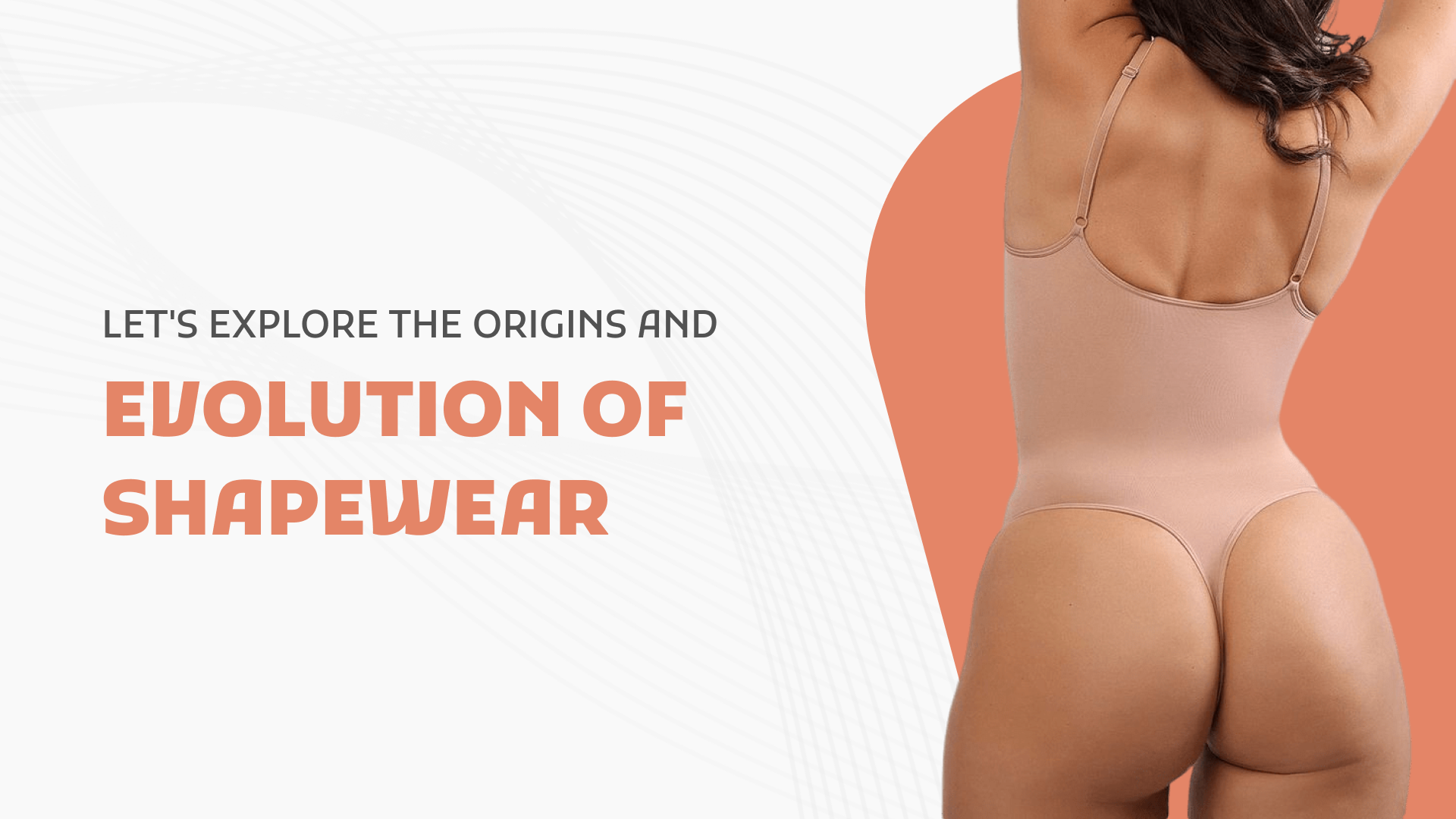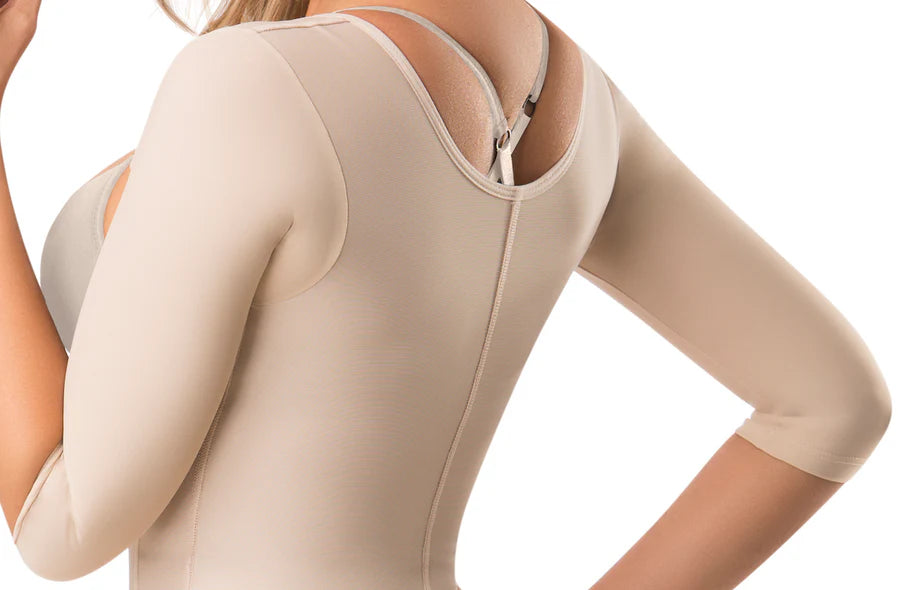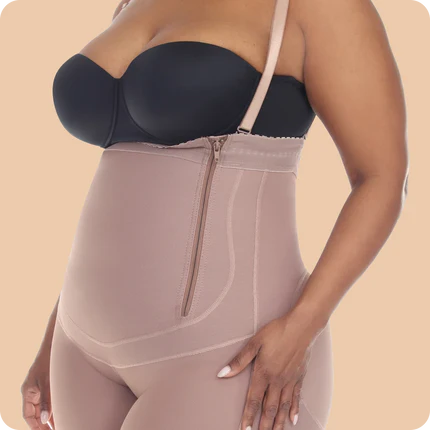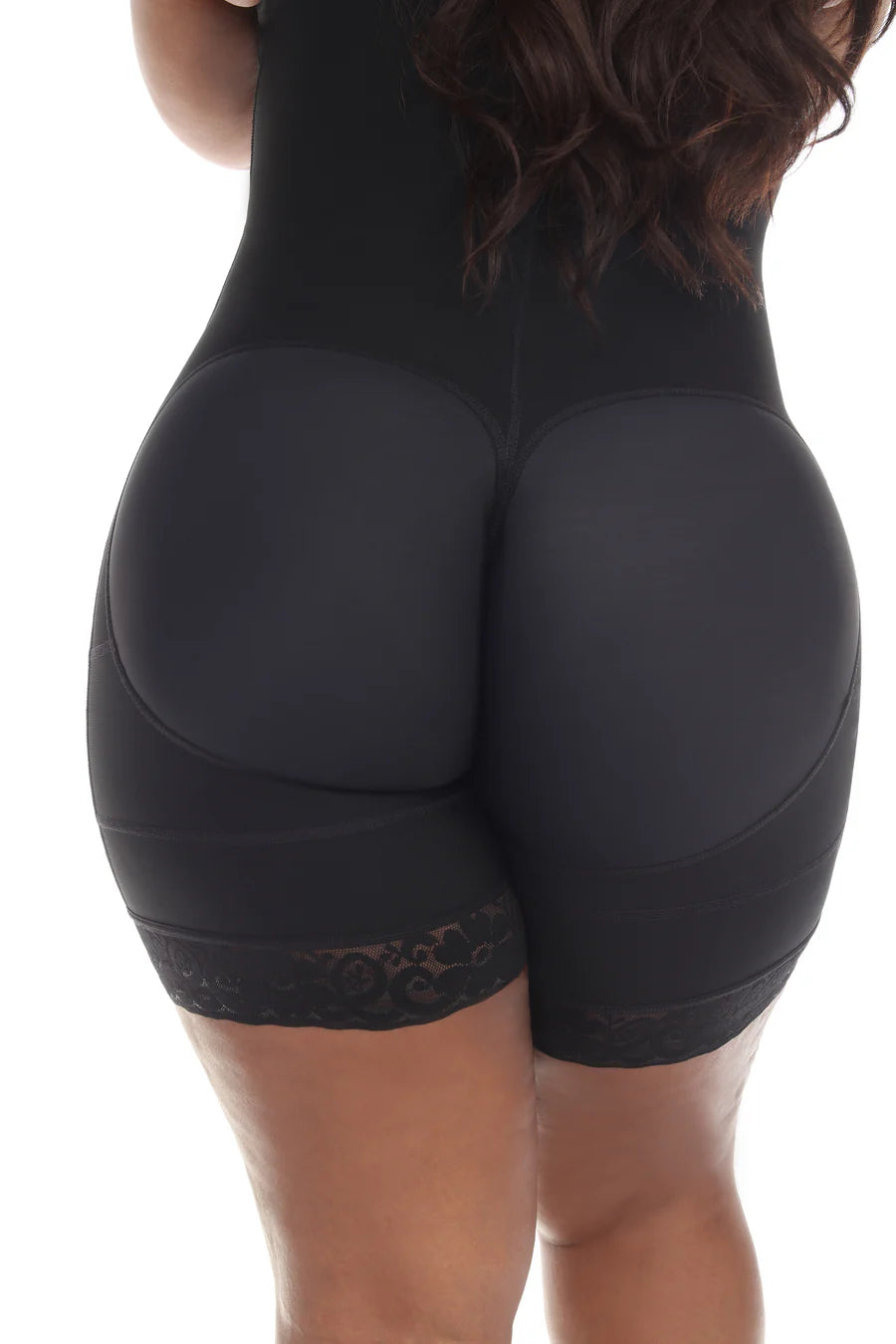The Origins and Evolution of Shapewear

For centuries, shapewear has become a wardrobe essential for many women. Shapewear garments offer quick solutions for enhancing body shapes and boosting confidence.
Technology, fashion trends, and beauty ideals have influenced shapewear from generation to generation. This article is a captivating journey through the origin and evolution of shapewear from tight corsets to the faja shapers we know today.
Find out how this timeless garment has influenced fashion and perceptions of beauty and self-expression. Whether you are a fashion enthusiast or a history buff, this article helps you understand significant changes in shapewear material, design, and functionality.
If you are looking for the best body shaper for women, look no further than the Perfect Shape online shop for all your shapewear needs.
Historical Roots of Shapewear

Hollywood celebrities like Kim Kardashian, in their sexy shapewear, look comfortable as they walk the red carpet, smiling and waving at cameras. And their bodies also look well-contoured. However, shapewear was not always this comfortable. It has come a long way from using metals to using elastic materials.
Are you looking to transform your looks while still feeling comfortable? Boost your confidence with our faja colombianas functional for any occasion.
Ancient Greek Women
Shapewear dates back to the 15th and 16th centuries. The Ancient Greek women used different materials to shape and support their bodies.
One of the early body shapers the women used was a special belt to create a flat tummy and thin waist. This figure bore relevance to fertility and virginity beliefs during their time.
After the belt came a girdle made from wool, soft leather, and linen. The girdle aimed to push the breasts outward and clinch the waist to create a more petite figure.
They also introduced metal to the girdle to achieve that defined look.
Corsets
The ancient Roman women used corsets to enhance their curves. They wore corsets and breast binders to keep the upper body flat and the waist slim for a feminine look.
The women also wore corsets on top of their garments to enhance their feminine curves.
But unlike Greek women, they did not want to push their breasts outward but preferred to reduce their appearance.
During the 16th century, women wore steel corsets inspired by Queen Elizabeth's outfit. During this era, they displayed their hips as a sign of their childbearing qualities using steel corsets.
Interestingly, corsets were a reserve for the wealthy and upper classes of society. It wasn't until later that the lower classes had their sewing machines and made their own.
The corsets made from metal and whalebones were so restrictive that they caused health concerns. Furthermore, some women activists criticized wearing corsets, claiming they restricted movement.
World War Influence on Shapewear
During the 20th-century world war, there was a metal shortage as it was reserved for military supplies. Women went without stockings and wore minimal undergarments to dedicate resources for ammunition and other resources.
They also had to wear practical clothing to enable them to move and work without restrictive clothing.
Consequently, shapewear popularity decreased since women wore less restrictive shapewear. The women must have been relieved to stop wearing the metallic corsets, as wearing the corsets was a complicated process. It often required help and sometimes lying down to have another person fasten it.
You might have watched a scene in a movie where a woman gasped with every tightening of the corset. Moreover, the women were expected to perform household chores while always wearing corsets.
But fashion evolved, and women turned to alternatives like synthetic fabrics to make their shapewear. They also invented elastic in their undergarments for added comfort.
By this time, women also preferred to appear slim rather than show curves.
Shapewear was now designed not only for the waist but also to accentuate the hips and thighs.
They wore fitted shapers known as flappers that also revolutionized and came with pockets and secret storage.
The Invention of Pantyhose and Lycra
In the 1950s, shapewear again evolved with the invention of pantyhose. These one-piece undergarments, combining stockings and underwear, became more convenient and widespread.
With no more need for the girdle, pantyhose became more popular, with the benefit of smoothing a figure and reducing chafing.
By the 1970s, women were ditching pantyhose and girdles for more comfort and flexibility. Women embraced exercise, including bicycles, and needed comfortable garments by this time.
While working as a researcher for polymers, a chemist known as Joseph Shivers invented lycra, a stretchy fabric.
Popularly known as spandex, lycra was ideal for shapewear because of its lightweight, stretchy, and durable qualities.
Spandex is a remarkable fabric still in use today, with a market value of $ 7.74 billion in 2021. In the 20th century, fashion designers revolutionized the shapewear industry by introducing body shapers for women, bodysuits with inbuilt bras, shaper shorts, and waist cinchers.
Modern Shapewear

Women's fashion continuously changes, and shapewear adapts to these changes. Traditional shapewear faces criticism from medical experts for causing breathing problems and deformities. Unlike in the past, women today are more conscious of their needs and demand safe and comfortable products.
How has modern shapewear changed?
Body Positivity
Body positivity movements have encouraged women to accept their bodies by changing their perceptions. Hence, the campaign has allowed women to choose and demand shapewear that suits their bodies. Shapewear is no longer restrictive but a symbol of freedom of expression for daily wear.
Diversification
Diversification has also changed the industry and led companies to design shapewear products for all sizes and needs. For example, you can get shapewear faja for post-surgery or postpartum needs, which was not available in the past. Additionally, there are shapewear products for men ranging from full-body shapers to briefs.
Technology
Technology advancements have also shaped the industry by introducing innovative designs. Using 3D printing, laser cutting, and seamless bonding, providing products that make consumer preferences.
Today's women can confidently wear seamless dress shapewear with a smooth silhouette thanks to technology.
Compression Shapewear
The introduction of compression shapewear allows a woman to have a smooth silhouette in any outfit. Compression garments are designed with elastic materials that compress specific body areas to enhance a beautiful curve.
Did you know that shapewear can also help improve your posture? Compression garments like Colombiana fajas enhance posture, especially for people who sit for long periods of time.
Breathable Shapewear Fabric
Modern shapewear includes breathable shapewear designed with the best material to provide support and compression while allowing for free air circulation. Without this, you can suffer discomfort from all the sweating and lose confidence from body odor.
The breathable and lightweight fabric prevents overheating and discomfort, especially in hot weather. Comfortable shapewear allows you to wear it for prolonged periods.
Customized Options
Most women used to hunt for customized options by simply looking up “a faja store near me” on their smartphones–fail to find any. Unlike before, you can now order full-body shapers at your desired compression level. You can also choose a design and size that best suits your body type.
Still, you can have faja shapers for bridal occasions to give you that perfect shape on your special day. Moreover, shapewear is not limited to women, as men's shapewear is available to provide a toned appearance. Visit her Perfect Shape website to see our customized collections.
The Future of Shapewear

The future of shapewear is bright, as the market is projected to grow and reach up to USD 6.95 by 2030. Going by the current trend, the future of shapewear is moving towards more comfort and versatility. It is also moving toward seamless designs for various body types and sizes.
Technology
Advancements in technology will continue pushing the shapewear industry forward. Through technology, designers can embed sensors to monitor the user's temperature and adjust accordingly.
The smart textiles can track biometric data and provide further insights into overall fitness and health. Using technology to order sexy shapewear online also makes garments easily accessible.
Sustainability
There is also a trend towards sustainable and eco-friendly materials in shapewear production. As the demand for sustainability continues, the future of shapewear will likely prioritize eco-friendly solutions. Most shapewear is made from synthetic materials that are not eco-friendly.
However, future designs might incorporate sustainable fabrics to reduce carbon footprints.
Focus on Health and Fitness
The future of shapewear will move beyond aesthetics and promote health and fitness. Shapewear designers provide garments that provide support and compression during workouts.
These garments are made using breathable materials to keep the wearer comfortable. Shapewear will also focus on posture correction and technology that tracks exercise performance. The focus on health boosts confidence for users.
Inclusivity
With the recent shift to body positivity and inclusion, the shapewear industry is expanding its range of sizes and designs. Instead of focusing on faja shapers that alter body shapes, the future will celebrate every body type.
Designers have also made dress shapewear and other shapers available in various shades for every skin complexion. More shades ensure that shapewear is accessible to all.
At Perfect Shape, we have specialized collections designed for individual needs.
Conclusion
The origin of shapewear can be traced to centuries ago, when the rich first used it. Since then, it has evolved one century after another to show its relevance. From Ancient Greek metallic garments to modern-day technology-enhanced shapewear fajas.
Shapewear has been around from restrictive corsets to modern-day compression faja shapers.
As the industry advances technology to include different body types, shapes, and health needs, shapewear will be a game changer. With demands for aesthetics and body confidence, shapewear will continue changing to meet consumer needs.
The global market is continuously growing, and future shapewear designers will continue providing users with enhanced options.
As the world is changing, don't be left behind. Check out our revolutionized shapewear and stand out in confidence and elegance!



